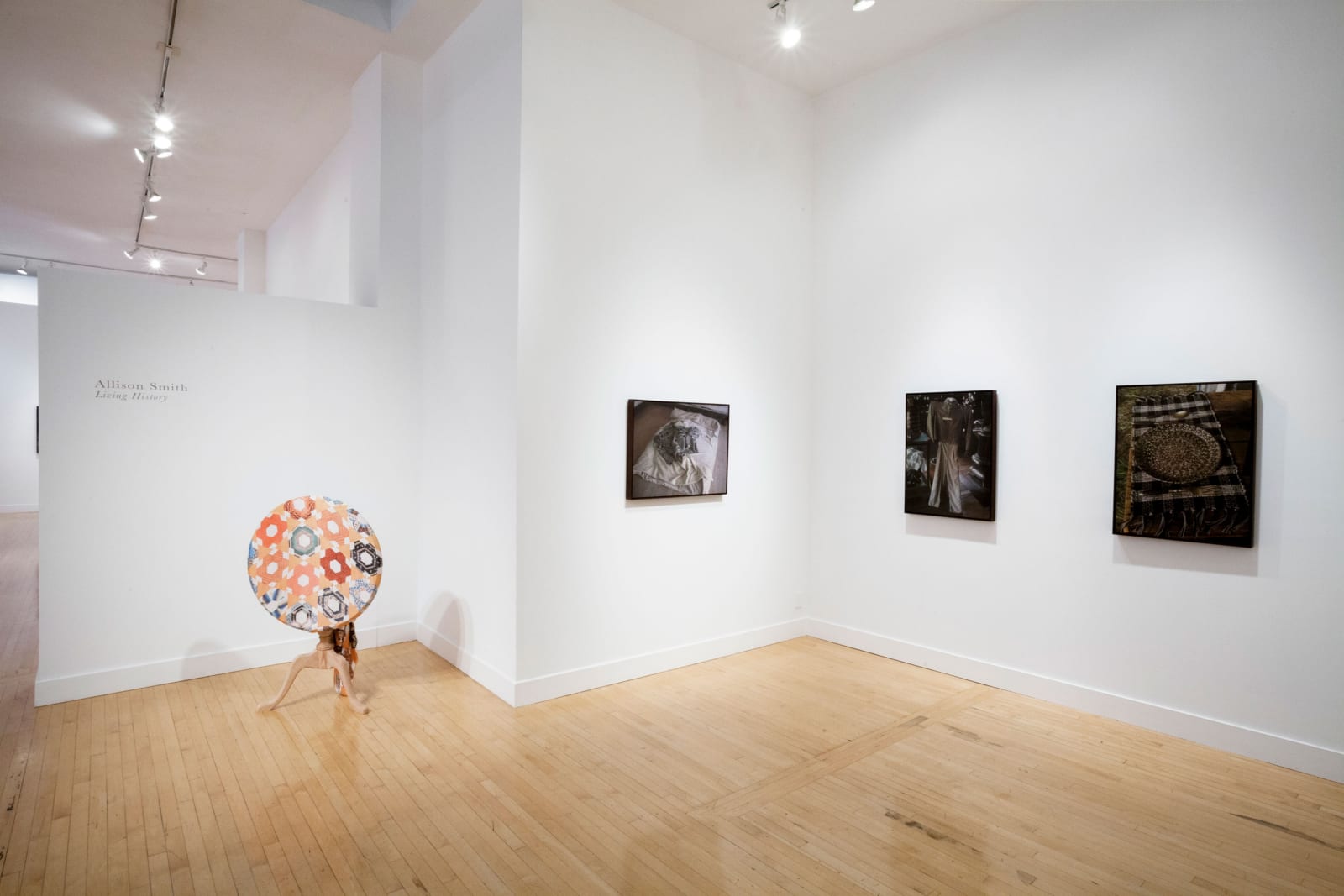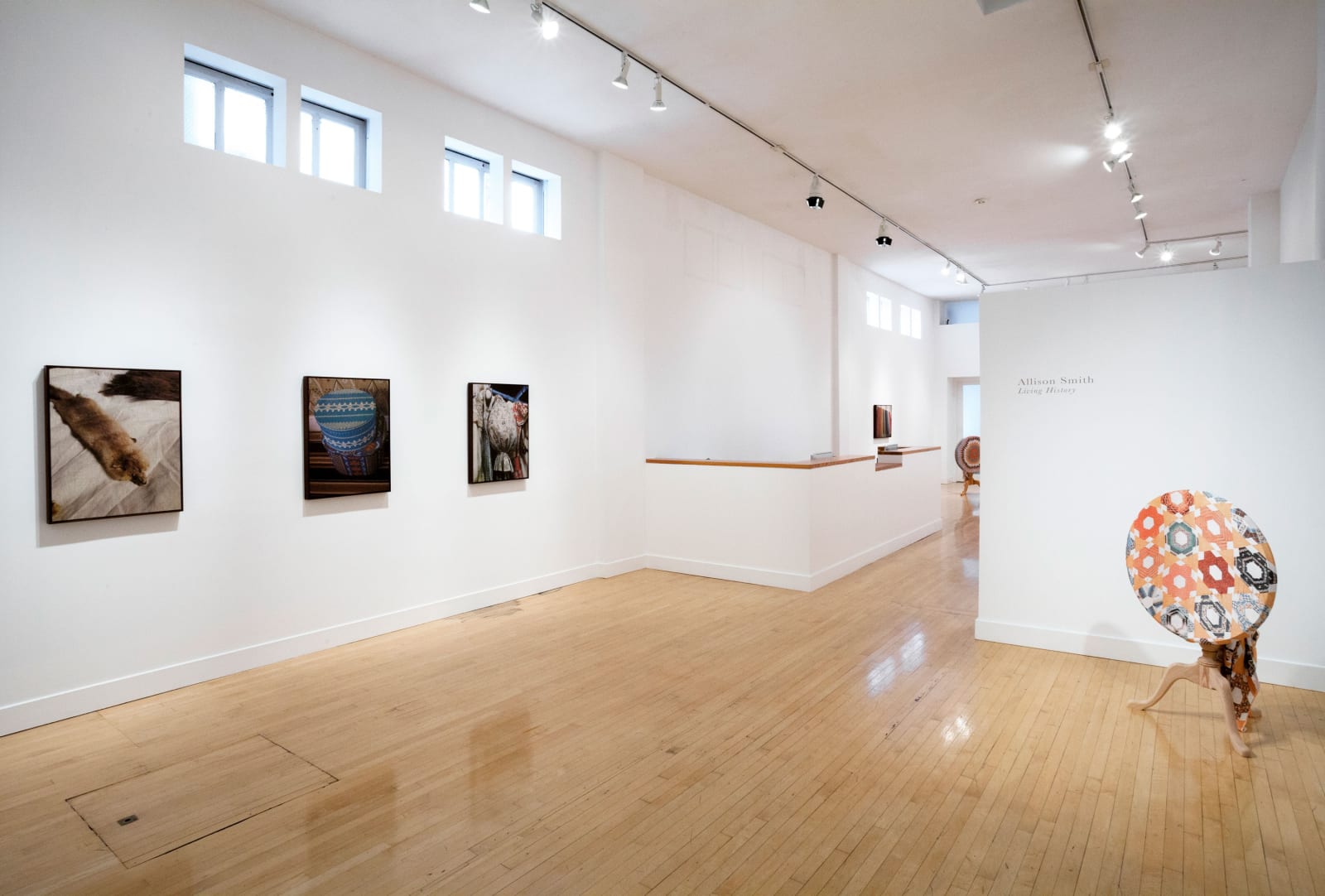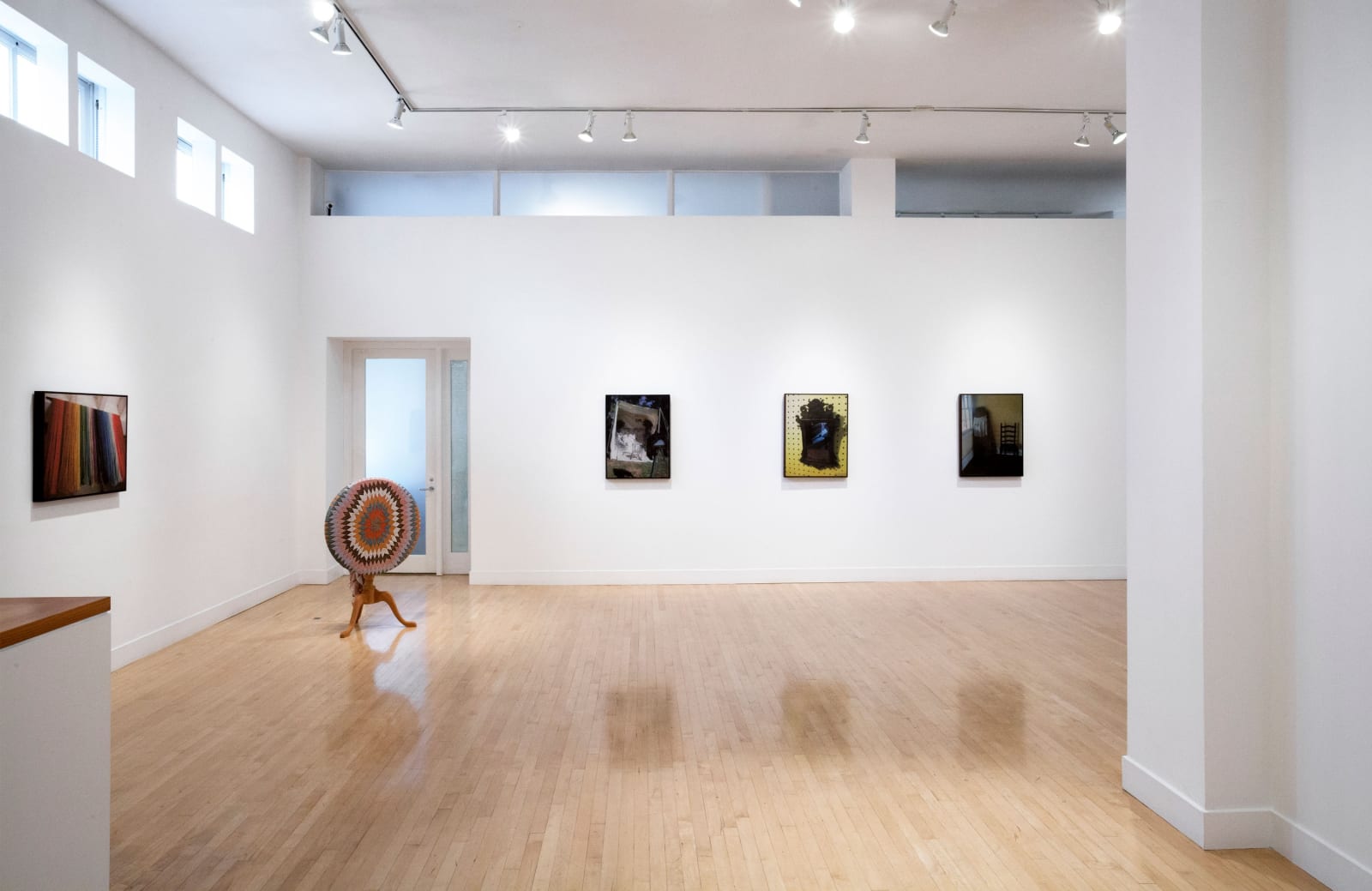Sunny A. Smith: Living History
For their second exhibition at Haines Gallery, Bay Area based artist SUNNY A. SMITH presents a series of photographic works on linen alongside sculptural pieces that continues their investigation of the cultural phenomenon underlying Living History - or the reenactment of life from another time — as it relates to early America. This tradition is founded on the principle that historical events gain meaning and relevance when performed live in an open-air, interactive setting. Smith reframes this rich set of activities and objects within the field of contemporary art, prompting content-based associations.
Smith's research-based practice is revealed through these photographs, which initially operate as a form of rigorous anthropological note taking. Printed on texturally rich linens and displayed in wood frames, the works not only play at the distinction between photograph and painting, but also evoke the craft history they document. They photograph living history villages, museums and craft fairs throughout the United States, approaching these venues with a keen eye for scenes that relate to their work, but also instances of uncanny juxtaposition — moments where the contemporary challenges of framing this history reveal themselves. Isolated from their original contexts, the objects and environments depicted begin to function as props and sets for a performance you can imagine, but never see unfold. The absence of human presence in these pictures imparts a certain timelessness, encouraging interpretations beyond the purely historical.
The sculptural works restage early-American colonial craft and textile patterns. The unfinished tilt-top tables stand new and ready for use, like props for a reenactment. Smith, however, reinterprets the potential of these tables. They situate them in unusable positions, wrapping them in silks patterned with historical textiles rendered almost psychedelic through the manipulation of their colors and contrast. While referencing the history from which they are derived — most notably, the invention of the kaleidoscope — these reflector-like objects transform into decidedly contemporary works through Smith's intervention.








